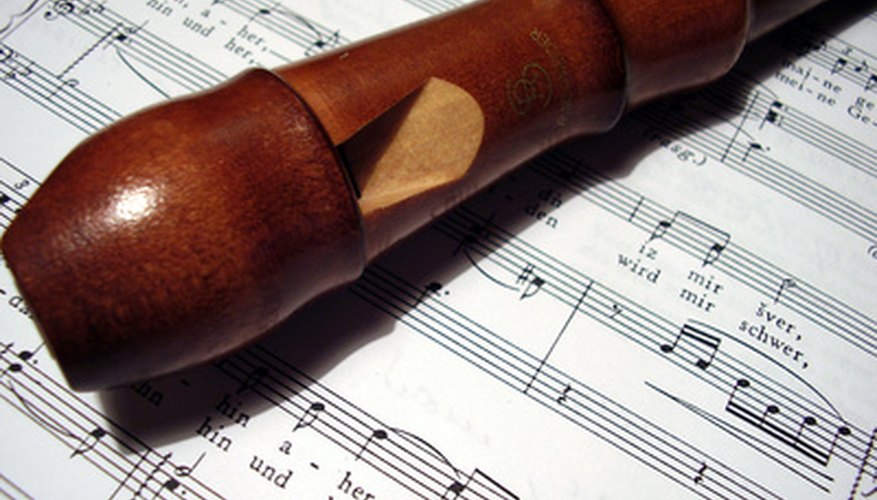Elderberry trees are commonly used for creating traditional wood flutes and percussion instruments such as clapper sticks. The process involves the removal of a tree branch while it is still green. The branch is then left to dry, hollowed out and finger holes are bored into the wood.
Select a branch of an elderberry tree where the bark is green. This will enhance the air flow, which affects the sound of the flute. Cut the branch off the tree using a saw. Cut the branch to a length of 12 inches with a diameter of an inch. Leave the branch for a day to dry out in a room temperature environment that is not subject to moisture or dramatic temperature change, such as in a spare room. Do not leave it in a humid basement or a shed.
- Elderberry trees are commonly used for creating traditional wood flutes and percussion instruments such as clapper sticks.
- Leave the branch for a day to dry out in a room temperature environment that is not subject to moisture or dramatic temperature change, such as in a spare room.
Cut an inch off of each end of the branch using a saw so both ends are flat. The length of the branch should now be 10 inches. Use a chisel and a long screwdriver to carve out the centre of the branch, removing the pithy substance until the centre is hollow.
- Cut an inch off of each end of the branch using a saw so both ends are flat.
- Use a chisel and a long screwdriver to carve out the centre of the branch, removing the pithy substance until the centre is hollow.
Measure and mark with a pen the centre point of the branch 5 inches in length and 1/2 inch in diameter. Mark three other points beginning an inch from the centre point and ascending up the branch an inch apart.
Drill four small holes where the four marks are. They should be centred on the 1/2 inch point and an inch apart from each other. These are the finger holes which will be covered and uncovered when blowing into the flute.
Sand the exterior of the flute. If desired, decorate the flute by painting the exterior and adding beads. Do not paint over the four finger holes.
Play the flute by first covering the four holes with your hand and blowing into the end farthest away from the holes. Blow air across the upper edge of the opening and experiment by uncovering holes to produce notes.
WARNING
When handling a green elderberry branch, wear gloves because they are poisonous.
